Investigating the Use of Luminous Capsule Bubble Tiles in Smart Structures to Improve Reflexology
Abstract
1. Introduction
2. Special Design of Tile Mould
3. Materials
3.1. Mix Ratio
3.2. Spring System for Pressure Points
3.3. Copper Plate
4. Results and Discussion
4.1. Scanning Electron Microscope (SEM) Analysis
- The first peak, located between 10 and 15°, is a high-intensity peak associated with a specific crystallographic orientation of Al2O3, which is stronger than the peak observed at 160 to 170°.
- The second peak, at 23–25°and slightly below 140°, indicates a particular crystallographic plane with a lesser concentration of Al2O3.
- The third peak, identified between 27 and 30°, has an intensity corresponding to 170° and indicates a significant concentration of Al2O3 at this crystallographic orientation.
4.2. Water Absorption Test
4.3. Bulk Density
4.4. Wet Transverse/Flexural Strength
4.5. Slip Resistance Test
4.6. Flatness Test
4.7. Rectangularity Test
4.8. Solar Reflectance Index
4.9. Human Analysis
4.10. Ellipse Area in Lateral and Longitudinal
4.11. Thermal Analysis
5. Conclusions
Author Contributions
Funding
Institutional Review Board Statement
Informed Consent Statement
Data Availability Statement
Acknowledgments
Conflicts of Interest
References
- Sierpina, V.S. Acupuncture: A Clinical Review. South Med. J. 2005, 98, 330–337. [Google Scholar] [CrossRef] [PubMed]
- Cho, S.J.; Choi, K.H.; Kim, M.J.; Kwon, O.S.; Kang, S.Y.; Seo, S.Y.; Ryu, Y. Biopotential Changes of Acupuncture Points by Acupuncture Stimulation. Integr. Med. Res. 2022, 11, 100871. [Google Scholar] [CrossRef] [PubMed]
- Jiang, C.; Chu, X.; Sun, A.; Lu, L. Explore the Effect of Pressing Acupuncture Combined with Abdominal Massage on Functional Constipation in Patients with Chest Pain and Heart Pain. Aten. Primaria 2024, 56, 1–2. [Google Scholar] [CrossRef]
- Li, X.; Liu, Y.; Jing, Z.; Fan, B.; Pan, W.; Mao, S.; Han, Y. Effects of Acupuncture Therapy in Diabetic Neuropathic Pain: A Systematic Review and Meta-Analysis. Complement. Ther. Med. 2023, 78, 102992. [Google Scholar] [CrossRef]
- Fan, X.; Liu, Y.; Li, S.; Yang, Y.; Zhao, Y.; Li, W.; Hao, J.; Xu, Z.; Zhang, B.; Liu, W.; et al. Comprehensive Landscape-Style Investigation of the Molecular Mechanism of Acupuncture at ST36 Single Acupoint on Different Systemic Diseases. Heliyon 2024, 10, e26270. [Google Scholar] [CrossRef]
- Hao, X.; Jiang, B.; Wu, J.; Xiang, D.; Xiong, Z.; Li, C.; Li, Z.; He, S.; Tu, C.; Li, Z. Nanomaterials for bone metastasis. J. Control. Release 2024, 373, 640–651. [Google Scholar] [CrossRef]
- Wang, Y.; Xu, Y.; Song, J.; Liu, X.; Liu, S.; Yang, N.; Wang, L.; Liu, Y.; Zhao, Y.; Zhou, W.; et al. Tumor Cell-Targeting and Tumor Microenvironment–Responsive Nanoplatforms for the Multimodal Imaging-Guided Photodynamic/Photothermal/Chemodynamic Treatment of Cervical Cancer. Int. J. Nanomed. 2024, 19, 5837–5858. [Google Scholar] [CrossRef]
- Quoc, L.T.; Thanh, H.N.T.; Le Khanh, T.; Trung, D.T. The Role of Acupuncture in Pain and Swelling Control for Postoperative Tibial Fracture Treatment. Int. J. Surg. Case Rep. 2022, 99, 107600. [Google Scholar] [CrossRef]
- Giovanardi, C.M.; Gonzalez-Lorenzo, M.; Poini, A.; Marchi, E.; Culcasi, A.; Ursini, F.; Faldini, C.; Martino, A.D.; Mazzanti, U.; Campesato, E.; et al. Acupuncture as an Alternative or in Addition to Conventional Treatment for Chronic Non-Specific Low Back Pain: Systematic Review and Meta-Analysis. Integr. Med. Res. 2023, 12, 100972. [Google Scholar] [CrossRef]
- Li, Y.; Trimmer, J.T.; Hand, S.; Zhang, X.; Chambers, K.G.; Lohman, H.A.C.; Shi, R.; Byrne, D.M.; Cook, S.M.; Guest, J.S. Quantitative Sustainable Design (QSD) for the Prioritization of Research, Development, and Deployment of Technologies: A Tutorial and Review. Environ. Sci. Water Res. Technol. 2022, 8, 2439–2465. [Google Scholar] [CrossRef]
- Bao, Y.; Ding, H.; Zhang, Z.; Yang, K.; Tran, Q.; Sun, Q.; Xu, T. Intelligent Acupuncture: Data-Driven Revolution of Traditional Chinese Medicine. Acupunct. Herb. Med. 2023, 3, 271–284. [Google Scholar] [CrossRef]
- Nasrollahi, N.; Shokri, E. Daylight Illuminance in Urban Environments for Visual Comfort and Energy Performance. Renew. Sustain. Energy Rev. 2016, 66, 861–874. [Google Scholar] [CrossRef]
- Deng, J.; Liu, Q.; Ye, L.; Wang, S.; Song, Z.; Zhu, M.; Qiang, F.; Zhou, Y.; Guo, Z.; Zhang, W.; et al. The Janus face of mitophagy in myocardial ischemia/reperfusion injury and recovery. Biomed. Pharmacother. 2024, 173, 116337. [Google Scholar] [CrossRef]
- Christopher, G.; Talati, D.; Brown, W. AI-Based Personalized Healthcare: Tailoring Treatment and Transforming Patient Outcomes. New Era Precis. Med. 2024, 131–142. [Google Scholar]
- Clements-Croome, D. Intelligent Buildings: An Introduction; Taylor & Francis: London, UK, 2013; p. 232. [Google Scholar] [CrossRef]
- Salam, A.; Abhinesh, N. Revolutionizing Dermatology: The Role of Artificial Intelligence in Clinical Practice. IP Indian J. Clin. Exp. Dermatol. 2024, 10, 107–112. [Google Scholar] [CrossRef]
- Li, Z.-Q.; Jiang, M.Y.; Liu, X.-H.; Cai, Y.-Q.; Wang, C.-L.; Cao, F.; Liu, J.-P. ping Research Trends of Acupressure from 2004 to 2024: A Bibliometric and Visualization Analysis. Heliyon 2024, 10, e38675. [Google Scholar] [CrossRef]
- Lin, Y.P.; Yi, S.X.; Yan, J.; Chang, X.R. Effect of Acupuncture at Foot-Yangming Meridian on Gastric Mucosal Blood Flow, Gastric Motility and Brain-Gut Peptide. World J. Gastroenterol. 2007, 13, 2229–2233. [Google Scholar] [CrossRef]
- Liebert, M.A.; Study, R.C. Laser Acupuncture in Knee Osteoarthritis: Photomed. Laser Surg. 2007, 25, 14–20. [Google Scholar]
- Lee, M.; Longenecker, R.; Lo, S.; Chiang, P. Distinct Neuroanatomical Structures of Acupoints Kidney 1 to Kidney 8: A Cadaveric Study. Med. Acupunct. 2019, 31, 19–28. [Google Scholar] [CrossRef]
- Liu, L.-Y.; Guo, H.; Ren, M.-Q.; Shen, L.; Chen, L.; Ma, W.-Z. Bloodletting acupuncture at jing-well points along three-yang meridians of foot combined with acupuncture on migraine:a randomized controlled trial. Zhongguo Zhen Jiu 2020, 40, 32–36. [Google Scholar] [CrossRef]
- Fan, M.-Y.; Chi, C.; Zhang, J.-H.; Wang, R.-X.; Kong, Q.-Y.; Wang, T.-Y.; Yan, J.-L.; Chen, Y.-J. Acupoints compatibility rules of acupuncture for depression disease based on data mining technology. Zhongguo Zhen Jiu 2023, 43, 269–276. [Google Scholar] [CrossRef] [PubMed]
- Janarthanan, S.D.; Devi, S.P.; Satheesh, V.S.; Varma, P.R.; Baluprithviraj, K.N.; Mohan, M.M. Patient Health Monitoring Using Foot Pressure. In Proceedings of the 2023 International Conference on Sustainable Computing and Data Communication Systems, Erode, India, 23–25 March 2023; pp. 842–848. [Google Scholar]
- De la Corte-Rodríguez, H.; Román-Belmonte, J.M.; Rodríguez-Damiani, B.A.; Vázquez-Sasot, A.; Rodríguez-Merchán, E.C. Extracorporeal Shock Wave Therapy for the Treatment of Musculoskeletal Pain: A Narrative Review. Healthcare 2023, 11, 2830. [Google Scholar] [CrossRef] [PubMed]
- Chung, E.; Lee, J.; Liu, C.C.; Taniguchi, H.; Zhou, H.L.; Park, H.J. Clinical Practice Guideline Recommendation on the Use of Low Intensity Extracorporeal Shock Wave Therapy and Low Intensity Pulsed Ultrasound Shock Wave Therapy to Treat Erectile Dysfunction: The Asia-Pacific Society for Sexual Medicine Position Statement. World J. Mens. Health 2020, 38, 1–8. [Google Scholar] [CrossRef] [PubMed]
- Matos, L.C.; Machado, J.P.; Monteiro, F.J.; Greten, H.J. Understanding Traditional Chinese Medicine Therapeutics: An Overview of the Basics and Clinical Applications. Healthcare 2021, 9, 257. [Google Scholar] [CrossRef]
- Pock, A.R.; Niemtzow, R.C.; Niemtzow, S.Z.; Koda, E.K. Acupuncture and Static Multipolar Magnets: An Emerging Attraction? Med. Acupunct. 2023, 35, 127–134. [Google Scholar] [CrossRef]
- Rodrigues, J.M.; Ventura, C.; Abreu, M.; Santos, C.; Monte, J.; Machado, J.P.; Santos, R.V. Electro-Acupuncture Effects Measured by Functional Magnetic Resonance Imaging—A Systematic Review of Randomized Clinical Trials. Healthcare 2024, 12, 2. [Google Scholar] [CrossRef]
- Hu, W.-L.; Kuo, C.-E.; Wu, S.-Y.; Tsai, Y.-H.; Wang, H.-C.; Hung, Y.-C.; Lin, C.-H.; Sun, M.-F. Practical Applications of Laser Acupuncture. In Advanced Concepts in Medicine and Medical Research; Book Publisher International: West Bengal, India, 2023; ISBN 9788196644963. [Google Scholar]
- Kaye, R.A.; Jahss, M.H. Fellows Review. Foot Ankle 1991, 11, 244–247. [Google Scholar] [CrossRef]
- Smita, R.; Riskowski, J.; Hannan, M.T. Musculoskeletal Conditions of the Foot an Ankle. Best Pract. Res. Clin. Rheumatol. 2012, 26, 345–368. [Google Scholar]
- Chang, W.J. Muscle Relaxants for Acute and Chronic Pain. Phys. Med. Rehabil. Clin. N. Am. 2020, 31, 245–254. [Google Scholar] [CrossRef]
- Tovaruela-Carrión, N.; López-López, D.; Losa-Iglesias, M.E.; Álvarez-Ruíz, V.; Melero-González, G.; Calvo-Lobo, C.; Becerro-De Bengoa-Vallejo, R. Comparison of Health-Related Quality of Life between Patients with Different Metatarsalgia Types and Matched Healthy Controls: A Cross-Sectional Analysis. Sao Paulo Med. J. 2018, 136, 464–471. [Google Scholar]
- Matthews, B.G.; Thomson, C.E.; McKinley, J.C.; Harding, M.P.; Ware, R.S. Treatments for Morton’s Neuroma. Cochrane Database Syst. Rev. 2021, 2021, CD014687. [Google Scholar] [CrossRef]
- Hurst, B.; Branthwaite, H.; Greenhalgh, A.; Chockalingam, N. Medical-Grade Footwear: The Impact of Fit and Comfort. J. Foot Ankle Res. 2017, 10, 2. [Google Scholar] [CrossRef] [PubMed]
- Danish, M.F.; Dabhekar, K.; More, S.R.; Khedikar, I.P. Study of Partial Replacement of Coarse Aggregate by Mosaic Tile Chips. Int. Res. J. Eng. Technol. 2020, 07, 7285–7288. [Google Scholar]
- Vorozhtsov, S.; Zhukov, I.; Vorozhtsov, A.; Zhukov, A.; Eskin, D.; Kvetinskaya, A. Synthesis of Micro-and Nanoparticles of Metal Oxides and Their Application for Reinforcement of Al-Based Alloys. Adv. Mater. Sci. Eng. 2015, 2015, 3–8. [Google Scholar] [CrossRef]
- Black-Ingersoll, F.; de Lange, J.; Heidari, L.; Negassa, A.; Botana, P.; Fabian, M.P.; Scammell, M.K. A Literature Review of Cooling Center, Misting Station, Cool Pavement, and Cool Roof Intervention Evaluations. Atmosphere 2022, 13, 1103. [Google Scholar] [CrossRef]
- Rawat, M.; Singh, R.N. A Study on the Comparative Review of Cool Roof Thermal Performance in Various Regions. Energy Built Environ. 2022, 3, 327–347. [Google Scholar] [CrossRef]
- Singh, S.P.; Sunayana, M. Cool Roof Technology. IJSRD-Int. J. Sci. Res. Dev. 2017, 4, 97–101. [Google Scholar] [CrossRef]
- IS:1237:2012; Cement Concrete Flooring Tiles—Specification. Bureau of Indian Standards: New Delhi, India, 2012.
- Mehta, P.; Dhapte, V.; Kadam, S.; Dhapte, V. Contemporary Acupressure Therapy: Adroit Cure for Painless Recovery of Therapeutic Ailments. J. Tradit. Complement. Med. 2017, 7, 251–263. [Google Scholar] [CrossRef]
- Li, S. Exploring Traditional Chinese Medicine by a Novel Therapeutic Concept of Network Target. Chin. J. Integr. Med. 2016, 22, 647–652. [Google Scholar] [CrossRef]
- Gawlińska-Nęcek, K.; Panek, P.; Starowicz, Z.; Socha, R.; Putynkowski, G.; Stodolny, M.; Van Aken, B. The Use of Copper in Solar Cells and Modules. In Proceedings of the 37th EU PVSEC, Virtual, 11 September 2020; pp. 24–28. [Google Scholar] [CrossRef]
- Thennarasan Latha, A.; Murugesan, B.; Skariah Thomas, B. Compressed Earth Block Reinforced with Sisal Fiber and Stabilized with Cement: Manual Compaction Procedure and Influence of Addition on Mechanical Properties. Mater. Today Proc. 2023; in press. [Google Scholar] [CrossRef]
- BS 7976-2002; Pendulum Test. British Standard: London, UK, 2002.
- Poyyamozhi, M.; Murugesan, B.; Rajamanickam, N.; Senthil, R.; Shorfuzzaman, M.; Abdelfattah, W.M. Enhancing Power and Thermal Gradient of Solar Photovoltaic Panels with Torched Fly-Ash Tiles for Greener Buildings. Sustainability 2024, 16, 8172. [Google Scholar] [CrossRef]
- Amorós, J.L.; Boix, J.; Llorens, D.; Mallol, G.; Fuentes, I.; Feliu, C. Non-Destructive Measurement of Bulk Density Distribution in Large-Sized Ceramic Tiles. J. Eur. Ceram. Soc. 2010, 30, 2927–2936. [Google Scholar] [CrossRef]
- Poyyamozhi, M.; Murugesan, B.; Perumal, S.; Chidambaranathan, V.; Senthil, R. Elevating Thermal Comfort with Eco-Friendly Concrete Roof Tiles Crafted from Municipal Solid Waste. J. Build. Eng. 2024, 88, 109222. [Google Scholar] [CrossRef]
- Resistance, S. Slip and Skid Resistance of Interlocking Concrete Pavements. Concrete 2004, 1, 1–8. [Google Scholar]
- Loprencipe, G.; Cantisani, G. Evaluation Methods for Improving Surface Geometry of Concrete Floors: A Case Study. Case Stud. Struct. Eng. 2015, 4, 14–25. [Google Scholar] [CrossRef]
- Mourou, C.; Zamorano, M.; Ruiz, D.P.; Martín-Morales, M. Characterization of Ceramic Tiles Coated with Recycled Waste Glass Particles to Be Used for Cool Roof Applications. Constr. Build. Mater. 2023, 398, 132489. [Google Scholar] [CrossRef]
- Jazieh, A.R. Quality Measures: Types, Selection, and Application in Health Care Quality Improvement Projects. Glob. J. Qual. Saf. Healthc. 2020, 3, 144–146. [Google Scholar] [CrossRef]
- Robles-Palazón, F.J.; Comfort, P.; Ripley, N.J.; Herrington, L.; Bramah, C.; McMahon, J.J. Force Plate Methodologies Applied to Injury Profiling and Rehabilitation in Sport: A Scoping Review Protocol. PLoS ONE 2023, 18, e0292487. [Google Scholar] [CrossRef]
- Chen, B.; Liu, P.; Xiao, F.; Liu, Z.; Wang, Y. Review of the Upright Balance Assessment Based on the Force Plate. Int. J. Environ. Res. Public Health 2021, 18, 2696. [Google Scholar] [CrossRef]
- Schubert, P.; Kirchner, M. Ellipse Area Calculations and Their Applicability in Posturography. Gait Posture 2014, 39, 518–522. [Google Scholar] [CrossRef]
- Kesztyüs, D.; Brucher, S.; Wilson, C.; Kesztyüs, T. Use of Infrared Thermography in Medical Diagnosis, Screening, and Disease Monitoring: A Scoping Review. Medicina 2023, 59, 2139. [Google Scholar] [CrossRef] [PubMed]
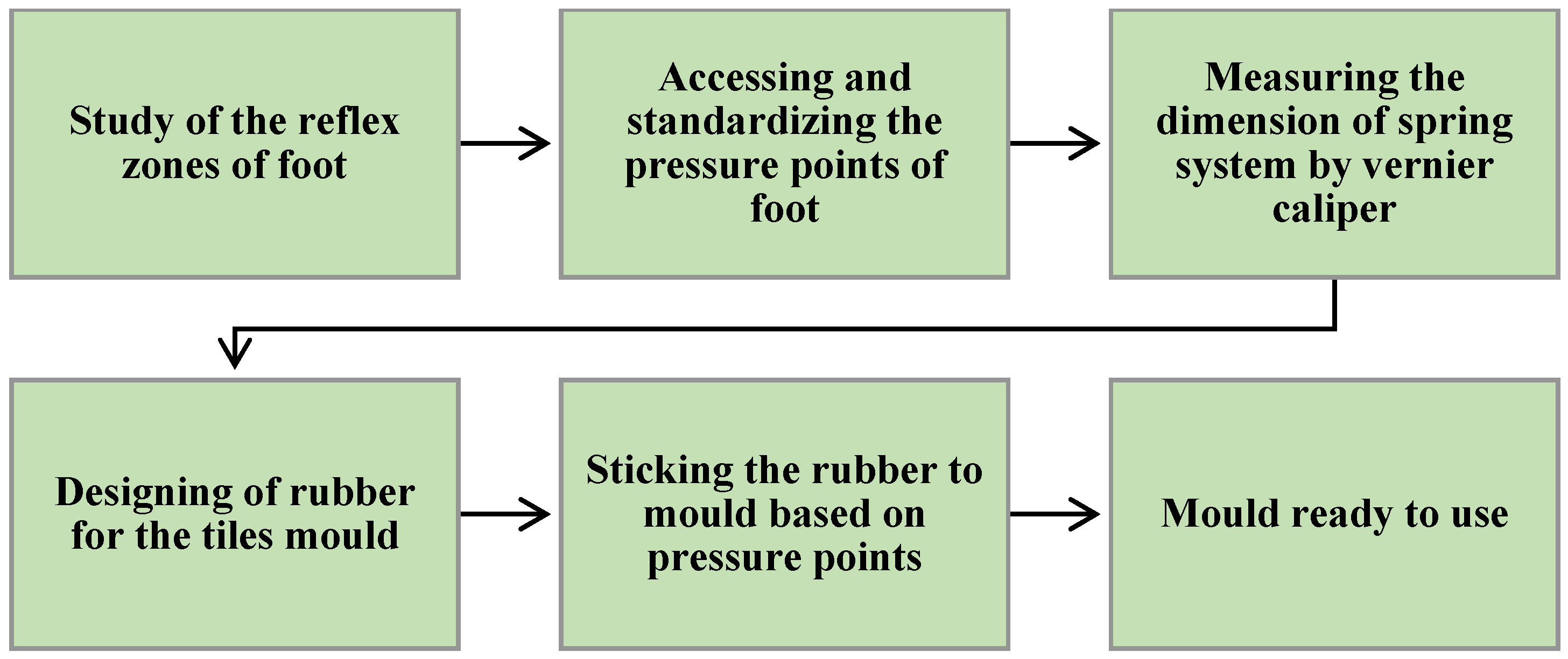
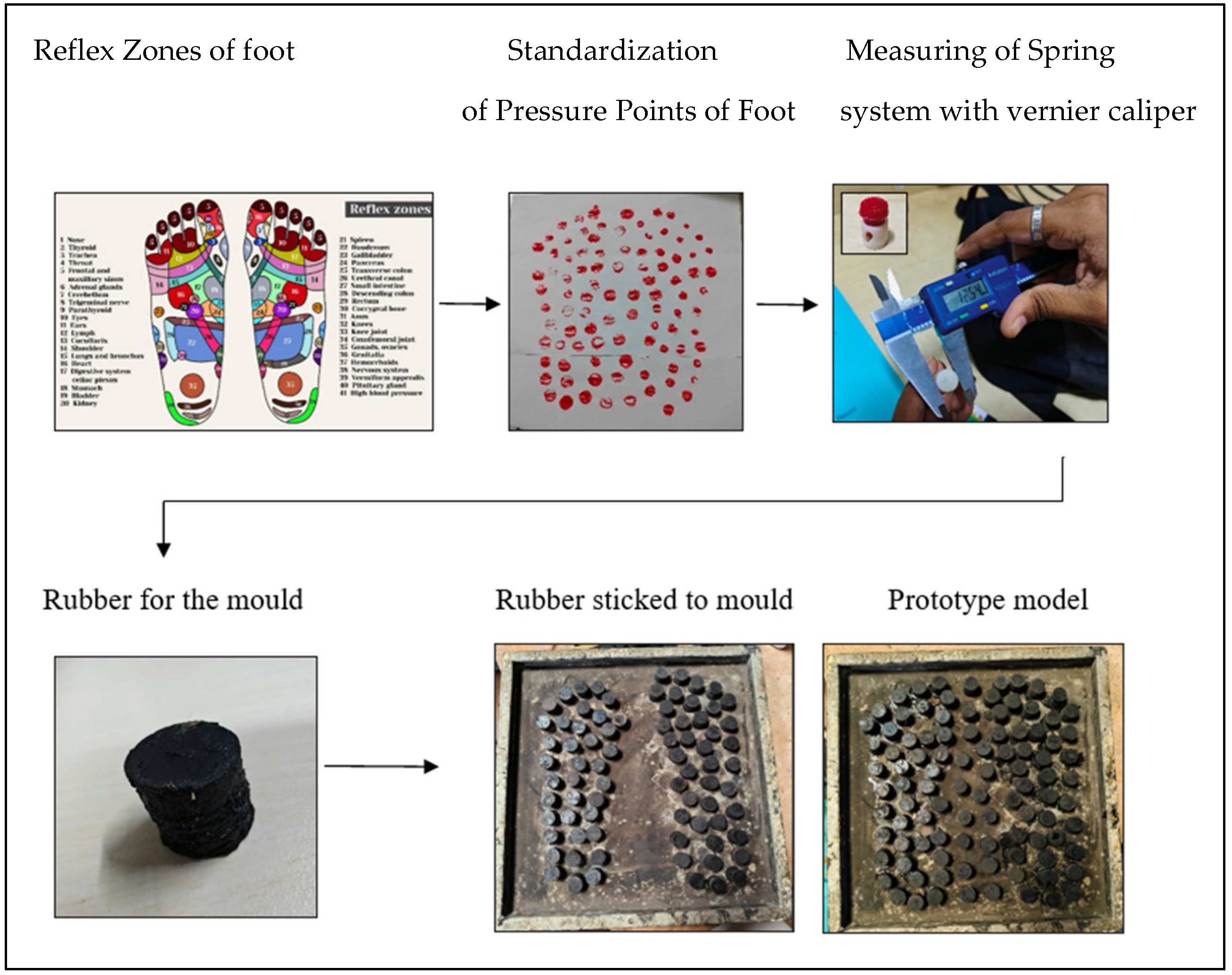


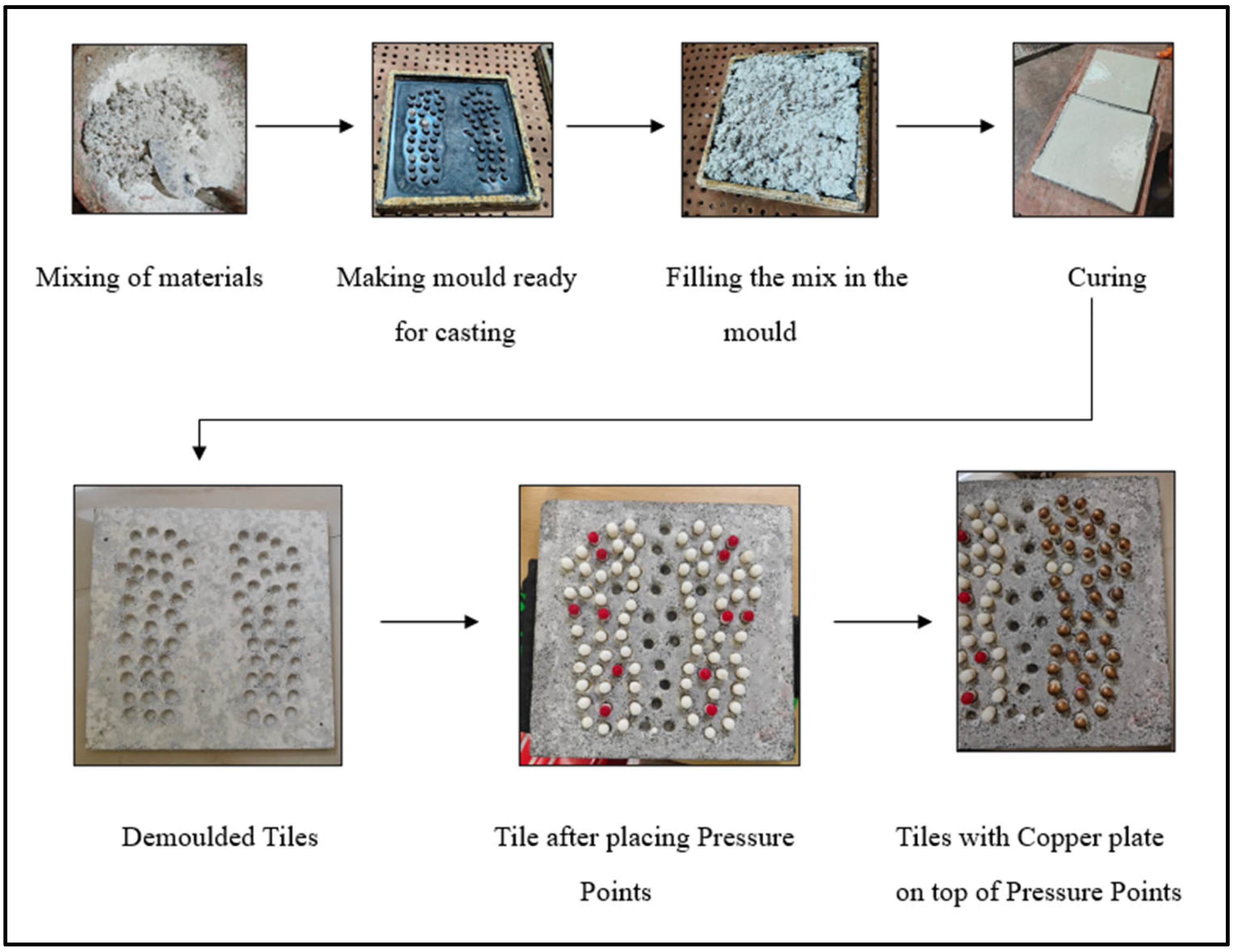
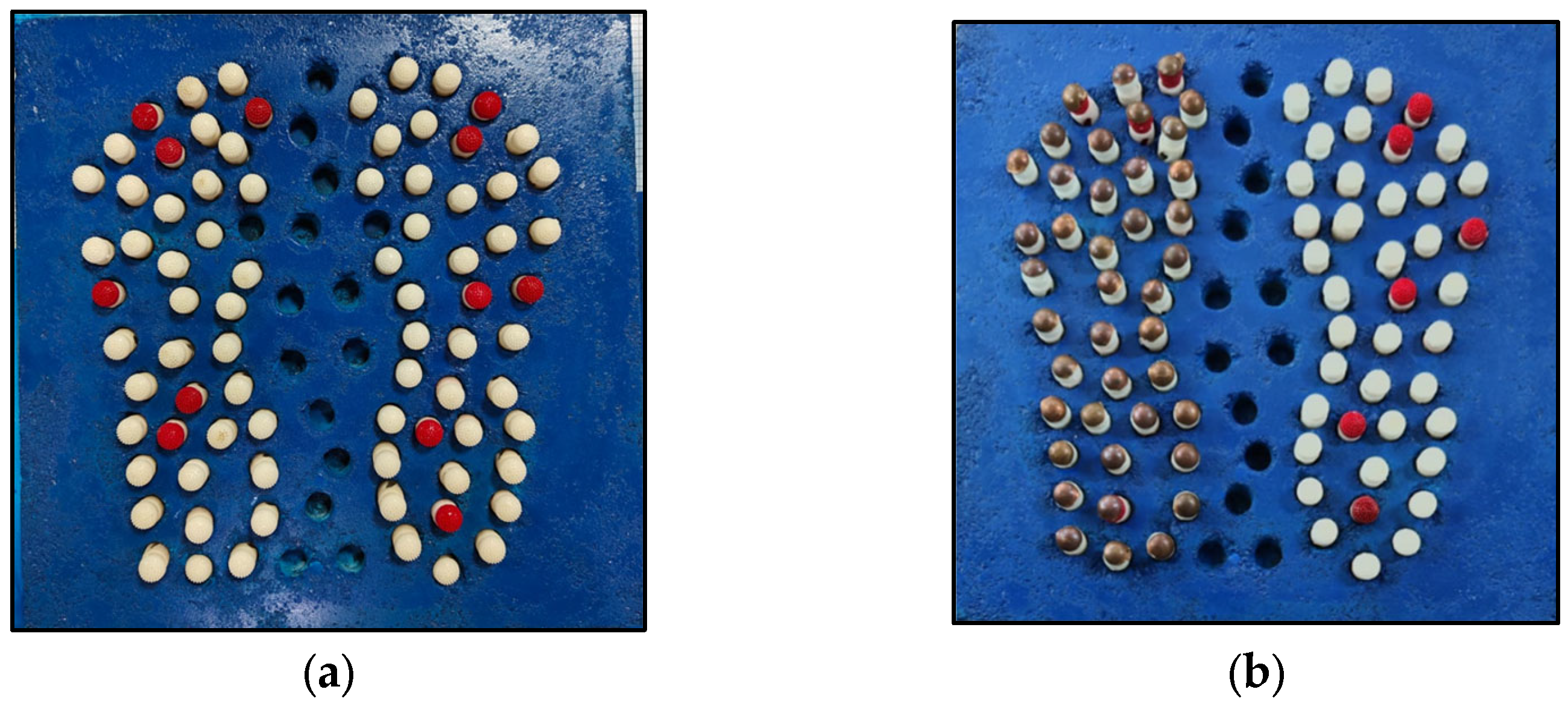
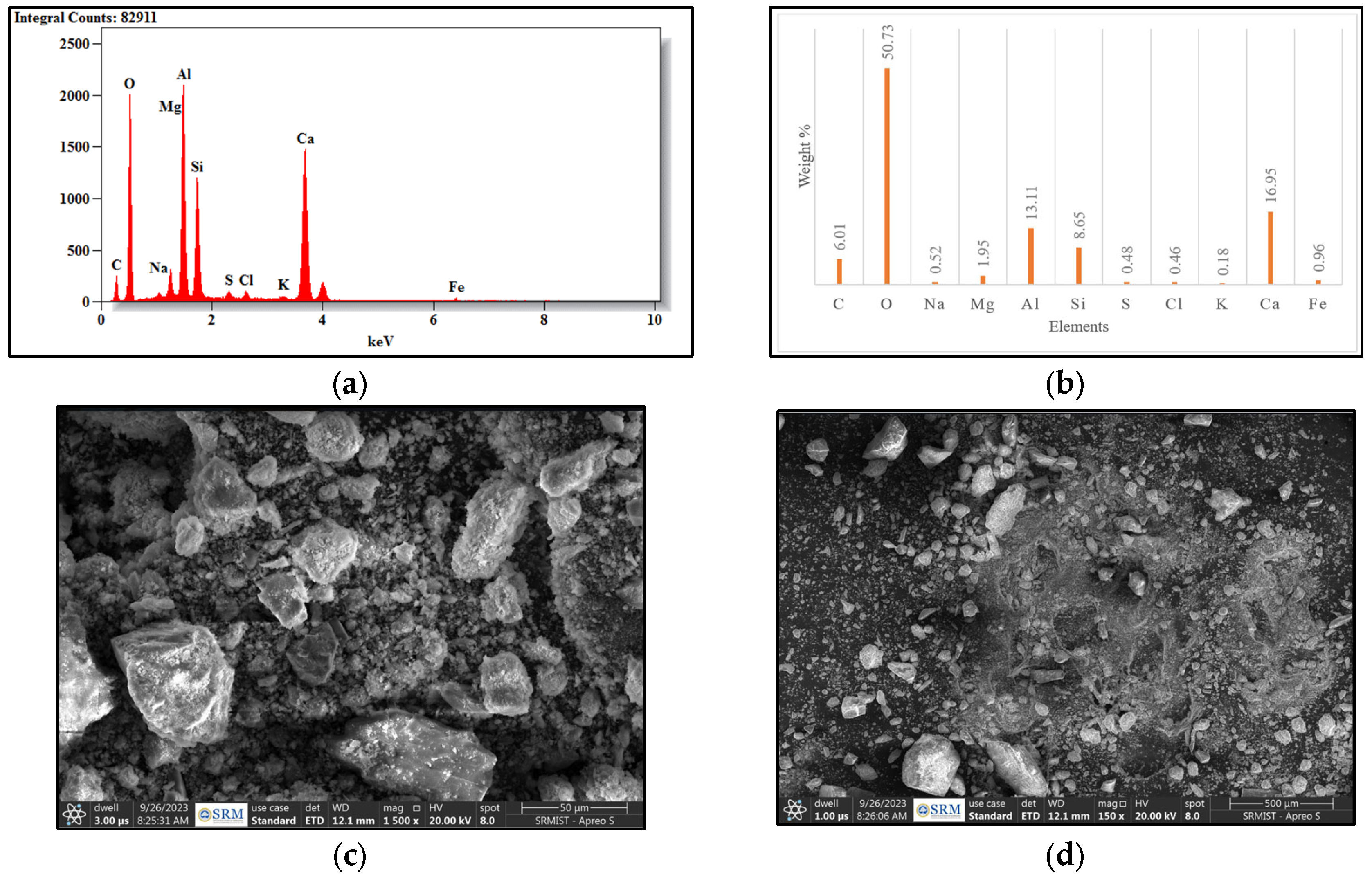
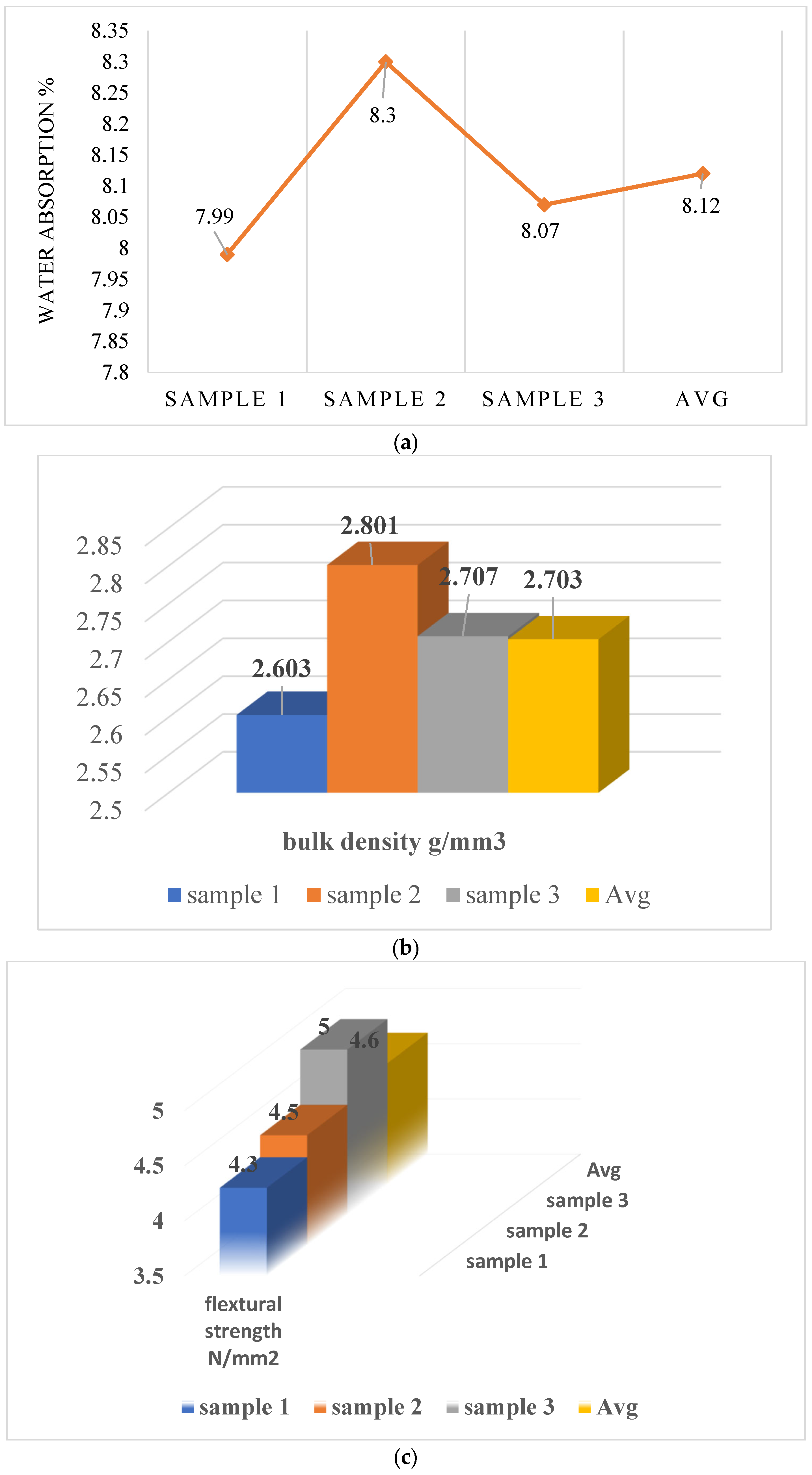
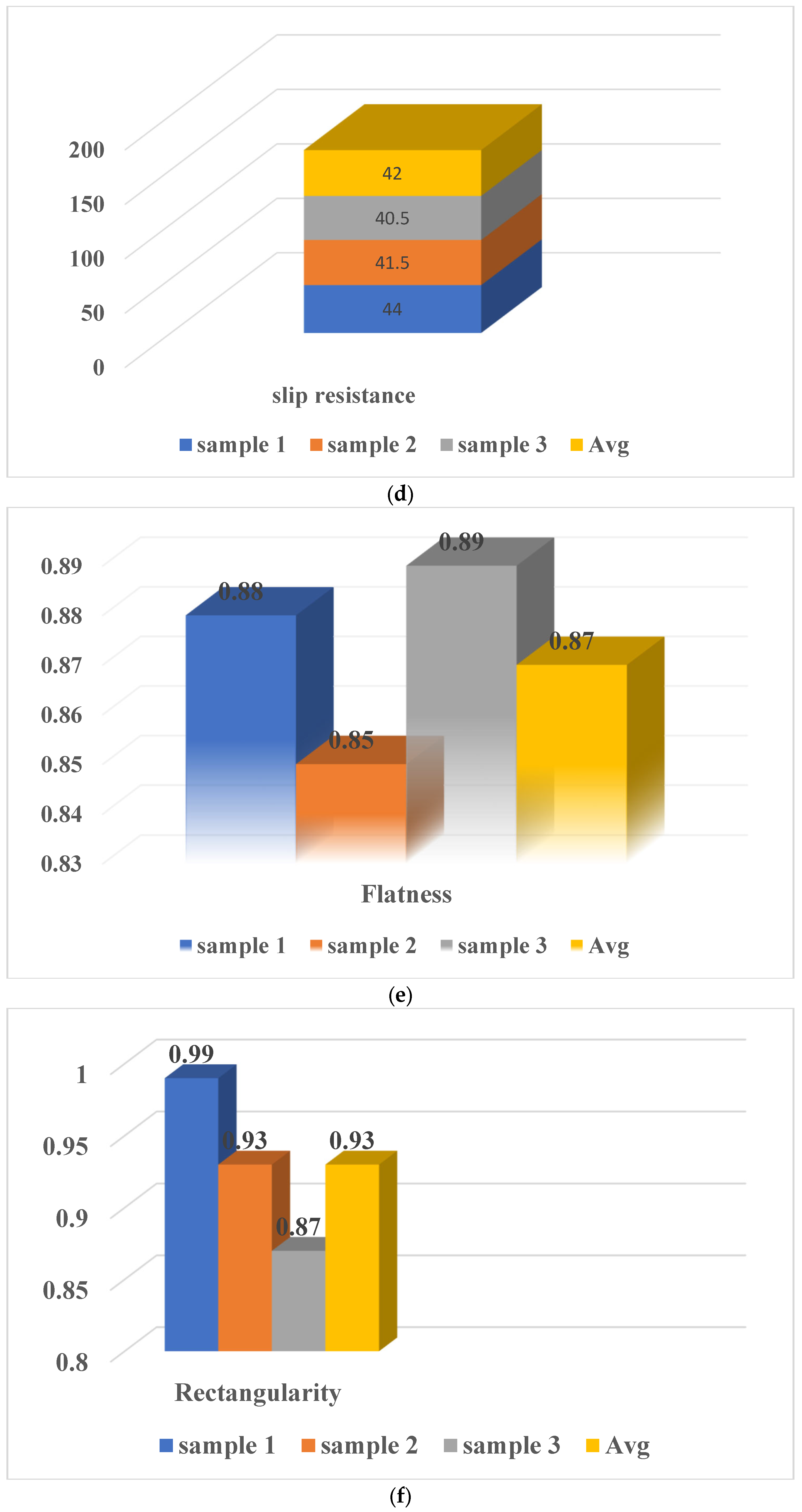
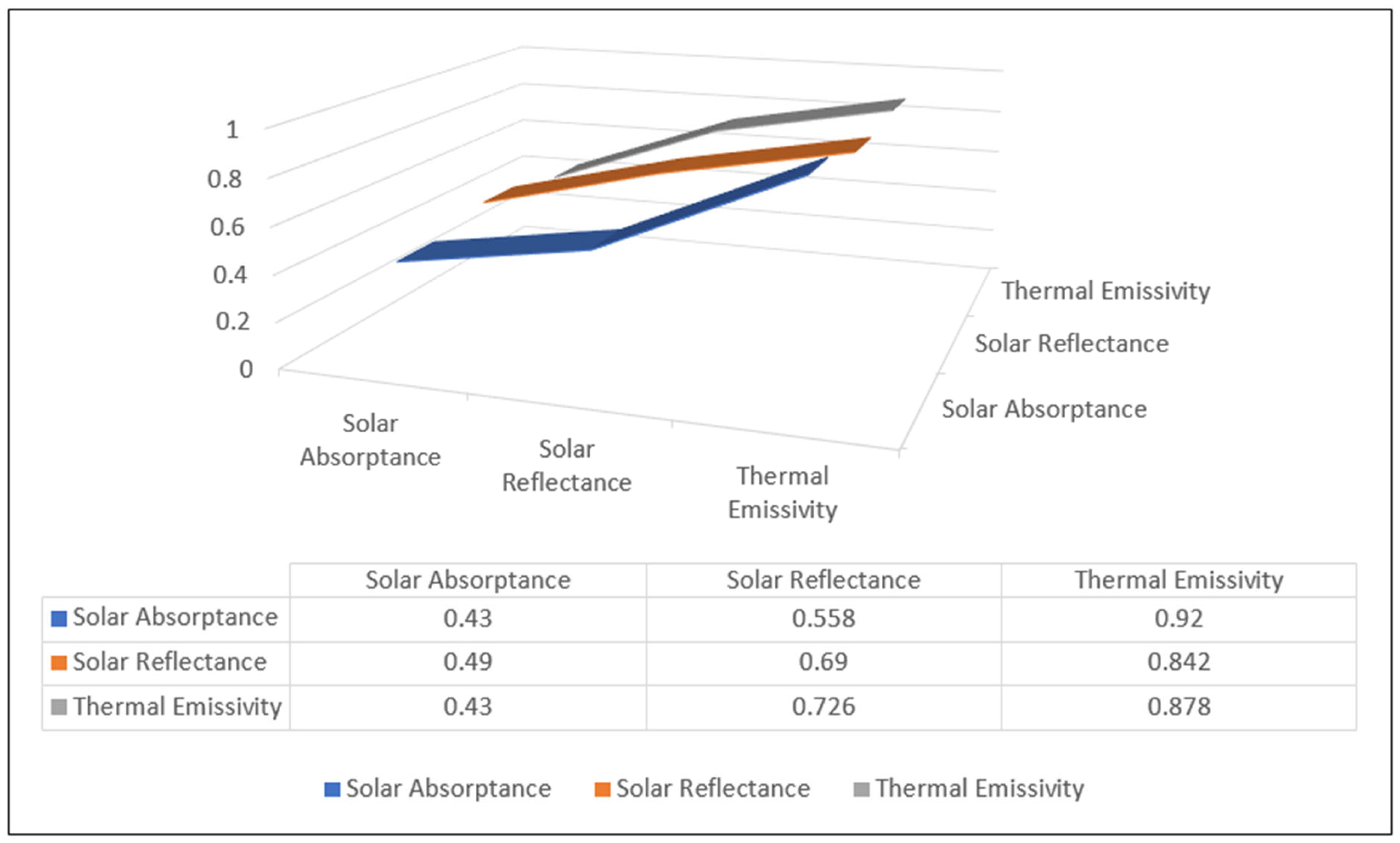
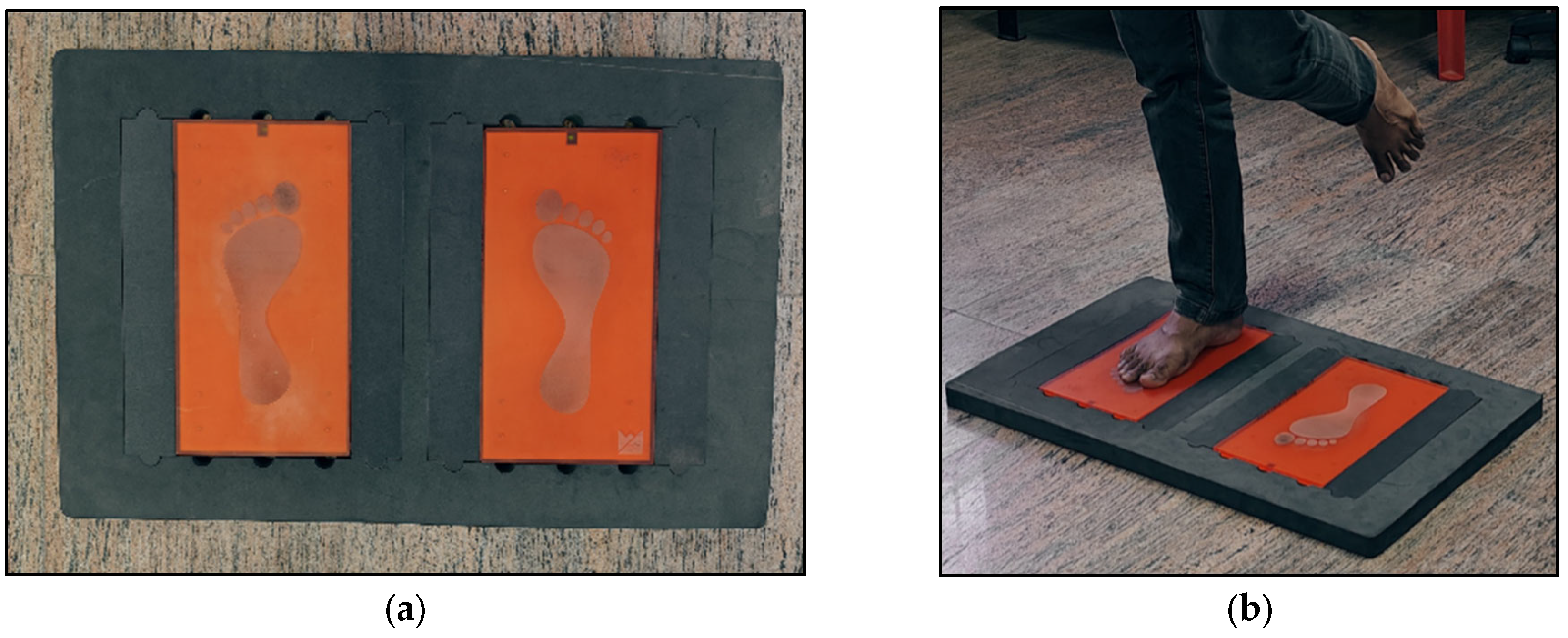

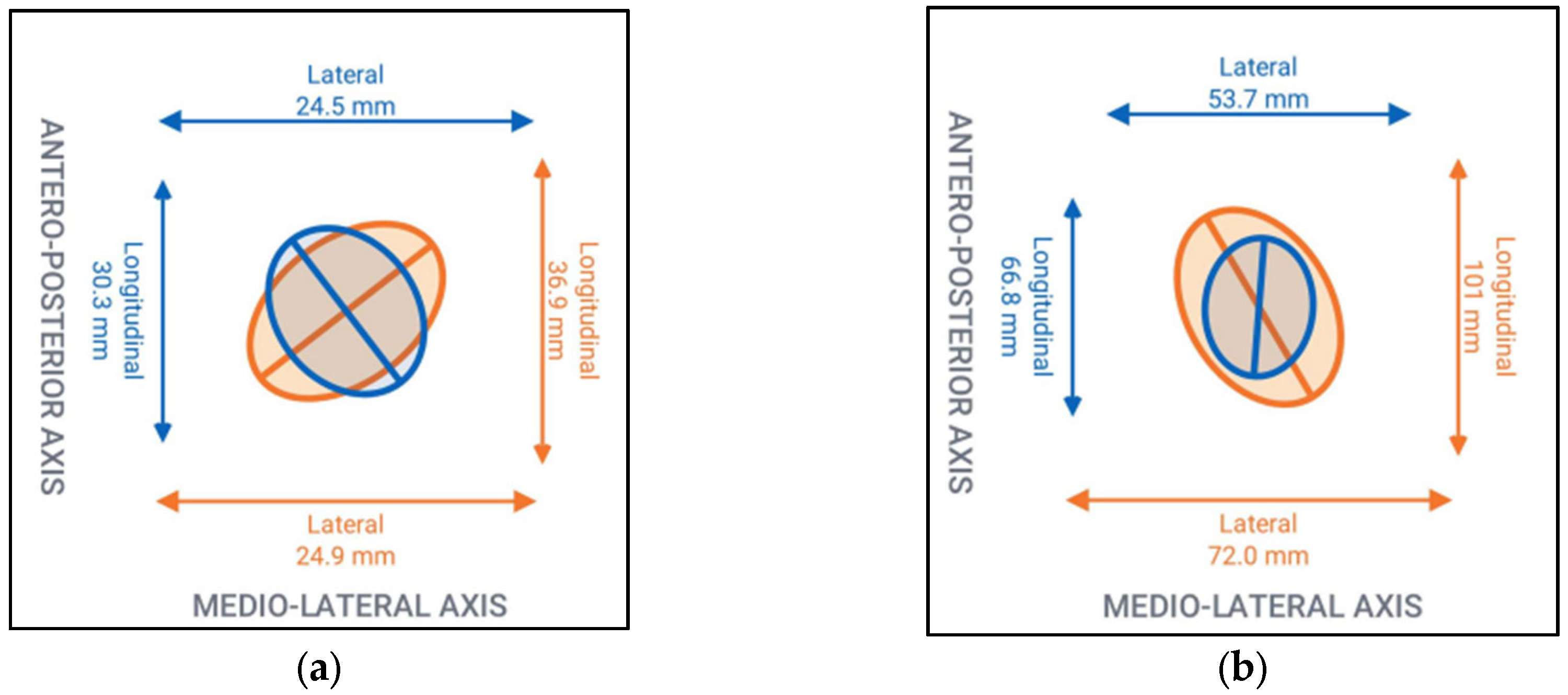

| S. No | Parameter | Left Foot | Right Foot |
|---|---|---|---|
| 1. | Ellipse Area (Eyes Open) | 100 cm2 | 34.3 mm2 |
| 2. | Weight Distribution (Eyes Open) | 52.7% (heel), 47.3% (toe) | 54.8% (heel), 45.2% (toe) |
| 3. | Circular Area (Eyes Open) | 721 mm2 | 583 mm2 |
| 4. | Asymmetry (Eyes Open) | 19.0% | 19.0% |
| 5. | Romberg Quotient (Eyes Open) | 7.9 | 4.83 |
| 6. | Heel–Toe Weight Distribution (Eyes Open) | 60.8% (heel), 39.2% (toe) | 56.4% (heel), 43.6% (toe) |
| 7. | Ellipse Area (Eyes Closed) | 5695 mm2 | 2818 mm2 |
| 8. | Asymmetry (Eyes Closed) | 50.5% | 50.5% |
| 9. | Romberg Quotient (Eyes Closed) | 7.9 | 4.83 |
| 10. | Heel–Toe Weight Distribution (Eyes Closed) | 51.4% (heel), 48.6% (toe) | 63.8% (heel), 36.2% (toe) |
Disclaimer/Publisher’s Note: The statements, opinions and data contained in all publications are solely those of the individual author(s) and contributor(s) and not of MDPI and/or the editor(s). MDPI and/or the editor(s) disclaim responsibility for any injury to people or property resulting from any ideas, methods, instructions or products referred to in the content. |
© 2025 by the authors. Licensee MDPI, Basel, Switzerland. This article is an open access article distributed under the terms and conditions of the Creative Commons Attribution (CC BY) license (https://creativecommons.org/licenses/by/4.0/).
Share and Cite
Poyyamozhi, M.; Ravichandran, P.T.; Bharathidass, K.; Murugesan, B.; Vadivelan, K.; Alsafyani, M.; Nureldeen, W.; Rajamanickam, N. Investigating the Use of Luminous Capsule Bubble Tiles in Smart Structures to Improve Reflexology. Buildings 2025, 15, 1092. https://doi.org/10.3390/buildings15071092
Poyyamozhi M, Ravichandran PT, Bharathidass K, Murugesan B, Vadivelan K, Alsafyani M, Nureldeen W, Rajamanickam N. Investigating the Use of Luminous Capsule Bubble Tiles in Smart Structures to Improve Reflexology. Buildings. 2025; 15(7):1092. https://doi.org/10.3390/buildings15071092
Chicago/Turabian StylePoyyamozhi, Mukilan, Panruti Thangaraj Ravichandran, Kavishri Bharathidass, Balasubramanian Murugesan, Kanniappan Vadivelan, Majed Alsafyani, Waleed Nureldeen, and Narayanamoorthi Rajamanickam. 2025. "Investigating the Use of Luminous Capsule Bubble Tiles in Smart Structures to Improve Reflexology" Buildings 15, no. 7: 1092. https://doi.org/10.3390/buildings15071092
APA StylePoyyamozhi, M., Ravichandran, P. T., Bharathidass, K., Murugesan, B., Vadivelan, K., Alsafyani, M., Nureldeen, W., & Rajamanickam, N. (2025). Investigating the Use of Luminous Capsule Bubble Tiles in Smart Structures to Improve Reflexology. Buildings, 15(7), 1092. https://doi.org/10.3390/buildings15071092






